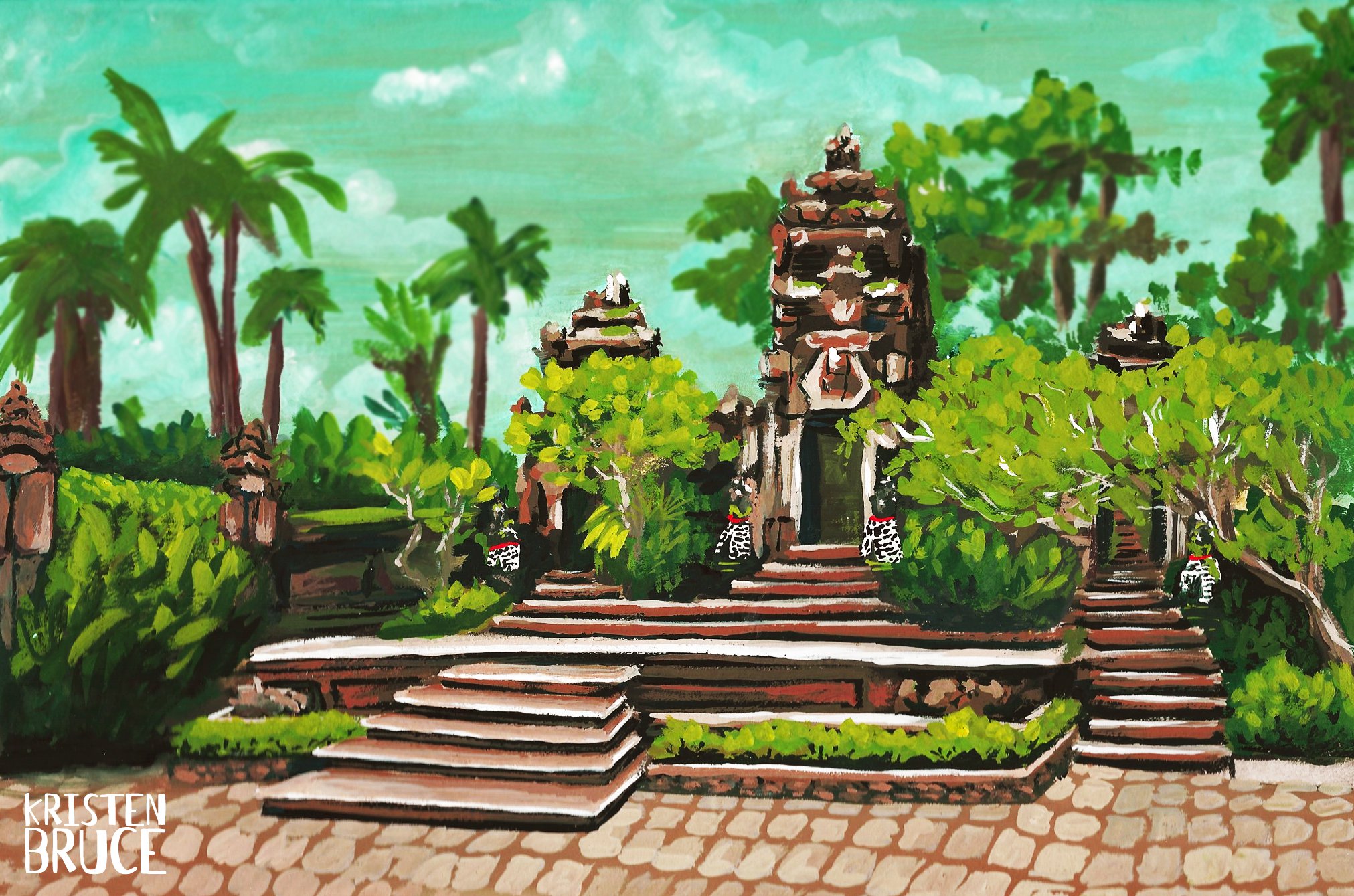While in Ubud, we noticed that many statues were wrapped in black and white checked fabric, and even some trees were too. Curious, we did some research and found out that this fabric, named Saput Poleng, is considered sacred. Based on the belief in Balinese Hinduism that there are three layers of spirituality, the checkered design represents the level in which everything is still black and white. This refers to the ability to recognise good and bad, right and wrong, happiness and sorrow. The harmony and balance between these is very important to the Balinese, and any statue or tree with this cloth draped over it is being identified as having a spirit inside, the cloth protecting this spirit and keeping harmony in the area.

You will find this pattern in the outer area of many temples. The more the spiritual awareness is developed, the less clear the contrast between black and white, as the person becomes enlightened and begins to see the world simply for what it is, rather than assigning 'good' or 'bad' labels to it. Being in an environment where there was so much respect for these statues and trees, it gave me this wonderful feeling of slowing down and appreciating every single place we went to. There is a lot of tourism in Bali, especially in Ubud where we stayed. But this attitude of respect and the sacredness of things completely balanced out the kind of hectic tourist side to the island. It felt as if, despite all that was going on, there was this underlying peace and calm about the place. And that is what really stuck with me.